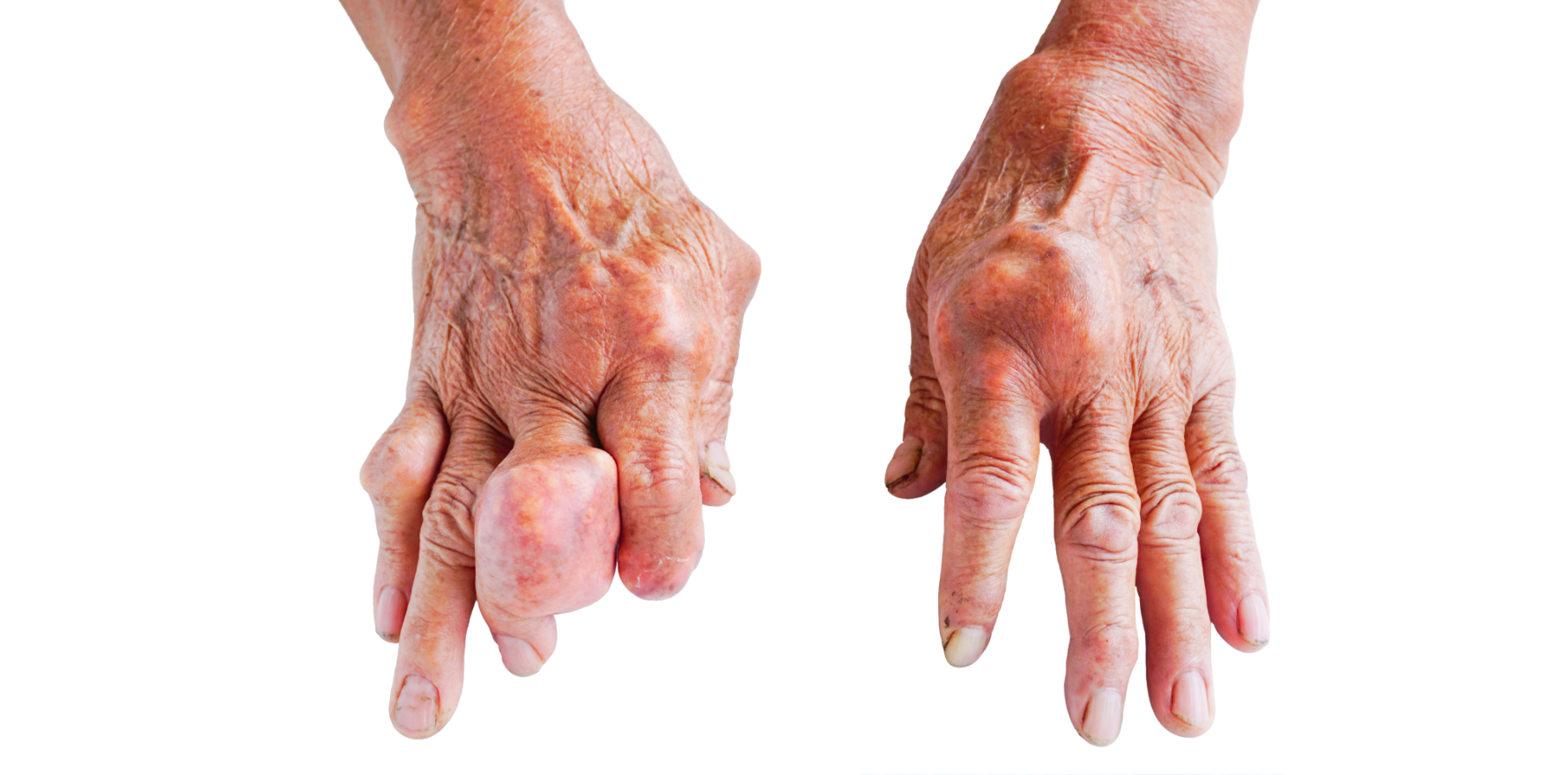We have seen a 42% increase in the rate of hospitalisation in the last decade, what's going on?
About 1 in 15 Australians are living with gout.
Despite effective treatments and well-established guidelines, we have seen a 42% increase in the rate of hospitalisation from gout in the last decade. So what’s going on and why is this happening?
Gout is characterised by sudden, severe attacks of pain, swelling, redness and tenderness in one or more joints. Although severe pain is well recognised as part of gout, the disease is often mischaracterised as an acute disease, and as otherwise harmless, when in reality, gout is often an intrusive, serious and potentially disabling disease that can cause irreversible, multi – joint damage, subcutaneous tophi, nephrolithiasis and chronic kidney disease.
For too long, gout has been caricatured as the disease of the gluttonous – an old stereotype that persists in modern medical discourse to the detriment of patients. While it is true that diet and alcohol consumption can trigger gout flares, the primary driver of the disease is genetic. The ongoing misrepresentation of gout in the public psyche can have consequences – sometimes patients endure the intense pain of a gout attack in private, reluctant to seek help or discuss their condition openly, because of the belief that it is a self-inflicted condition.
Over the course of my career, the approach to gout management has changed and some of us may be a little uncertain how to proceed. The risk of suboptimal treatment is an increased morbidity for our patients from gout flares – both in number and duration. I am pleased to say that free and helpful resources are now available to prompt appropriate treatment choices, developed by the Quality Use of Medicines Alliance (In full disclosure, I am a Director of the medical education company that hosts these resources.)
These resources include an algorithm which has informed my approach to patient care with some “take-home” messages that have been included in this article. For example, unless a patient has renal impairment, allopurinol is not a set and forget drug – the dose needs to be titrated to achieve appropriate serum urate concentration levels, and renal function monitored until a steady state is achieved.
The psychology of gout management can be challenging – we need to manage disappointment when our patient experiences a flare while on allopurinol, and explain that this does not indicate treatment failure, but probably inadequate dosage. It’s also important to stress to patients that if a flare occurs, allopurinol should be continued, in addition to flare treatment. And while it is tempting for patients to think they can cease medication in the absence of flares, we need to make it clear that this is not a curable disease and medication is lifelong. If the patient can’t tolerate allopurinol as a lifelong preventer, the use of febuxostat, a second line drug, is explained.
Importantly, the algorithm emphasises the need for flare prophylaxis with colchicine for patients who are starting or changing the dose of urate lowering therapy. Again, dose modification is required if renal impairment is present, and alternative therapies required for patients in whom colchicine is contraindicated, such as patients with blood dyscrasias, or severe renal or hepatic impairment, and in the presence of some drugs, including diltiazem or clarithromycin.
The algorithm provides a detailed guide to the management of gout flares – intra-articular corticosteroid injection, non-steroidal anti-inflammatory drugs (NSAIDs), oral corticosteroids and colchicine are the usual options. Intra-articular injections are suitable if only 1 or 2 joints are involved and the usual precautions with oral NSAIDs apply. NSAIDs are often the preferred medicine for younger people as they are more readily accessible and often have fewer side effects than colchicine.
Colchicine (if no contraindications) is now regarded as the second line for the management of acute flares – if NSAIDs and corticosteroids are contraindicated. Colchicine however is recommended as flare prophylaxis when ULT is initiated, needed until target serum uric acid levels are achieved, typically up to 6 months, and even longer if tophi persists.
Let’s face it, there are many challenges in gout management – especially with younger patients. We need to educate patients about the risks of undertreating gout and the need for ongoing treatment, and we need to empower them. To this end, you might find a handy patient gout plan useful (like an asthma plan) that enables patients to track their progress, medication titration plan and monitor their serum uric acid levels over time.
There are also a range of learning activities available, all with CPD points attached, if you want to hone your skills.
For more information visit medcast.com.au/qhub
The Quality Use of Medicines Alliance is funded by the Australian Government Department of Health and Aged Care. It comprises Medcast, Health Care Consumers’ Association, QUM Connect, Wiser Healthcare, Arthritis Australia, Eczema Support Australia, Pharmaceutical Society of Australia, Royal Australian College of General Practitioners.
A/Prof Stephen Barnett is the Medical Director of Medcast, a GP in the Southern Highlands of NSW and an experienced GP supervisor and Medical Educator.
He is a Clinical Associate Professor with the University of Wollongong Graduate School of Medicine and holds a PhD in e-learning and GP Training.



